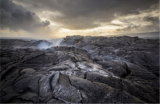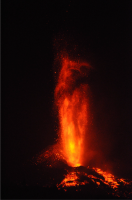Projects

Magma fluxes and recurrence rate of volcanic eruptions
Determining the relationships between fluxes of magma from depth, the physical properties of magma and the frequency and magnitude of volcanic eruptions.

VOLATILE CYCLING AND MAGMA DEGASSING ON EARTH AND EXOPLANETS: A WINDOW INTO THE GEODYNAMICS OF PLANETARY BODIES
The evolution of the Earth’s atmosphere has been shaped by magmatic degassing. In turn, the chemistry of magmatic gases is linked to the conditions of magma formation and therefore to geodynamic. Thus, linking the chemical evolution of the atmosphere to Earth’s geodynamic evolution would allow the study of exoplanets’ geology from the investigation of the chemistry of their atmospheres. To achieve this target, we will measure the content of H2O, CO2, S, Cl and F as well as the oxidation state of S, in apatite inclusions in zircons with age spanning the entire geological history of our planet. Zircons serve both to date the apatites precisely and to avoid any chemical exchange with the exterior. These data will allow to establish which ratios of volatiles species in exoplanetary atmospheres can indicate if a magma ocean operated on the planet or if active plate tectonics is plausible. This project will be realise within the framework of the "Center for the Life in the Universe" of the University of Geneva (https://www.unige.ch/sciences/cvu/)

Architecture of magmatic reservoirs
We use unsupervised and supervised machine learning to provide a petrological image of the thermal and chemical architecture of magmatic plumbing systems

Tajogaite eruption (La Palma)
This is a collaborative project with INVOLCAN in which we combine petrology and volcanology to reconstruct the evolution of the plumbing system during the 2021 eruption in La Palma. 1) In one project we investigate the connection between the physical properties of the volcanic deposit, petrology and mineral chemistry using unsupervised and supervised machine learning 2) In another project we analyses the chemistry of mantle xenoliths collected during the eruption to shed light on the deepest portion of the magmatic system tapped by this eruption
